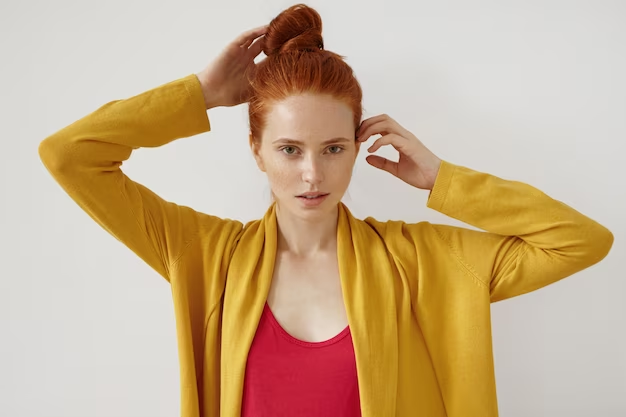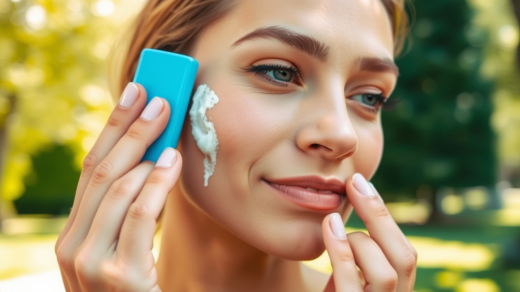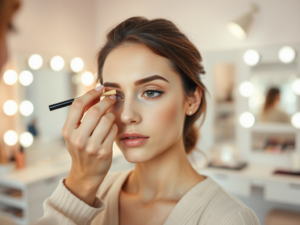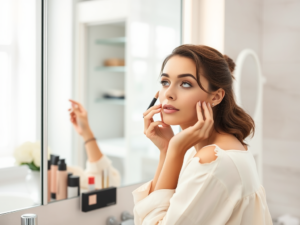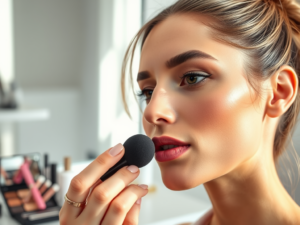How to Apply Makeup: A Step-by-Step Guide for Beginners
For many, the art of makeup is an exciting journey filled with potential for creativity and self-exploration. Whether you want to enhance your natural beauty or express your personality, mastering fundamental makeup skills is an empowering experience. Beginners often feel overwhelmed by the sheer number of products and techniques available, but approaching makeup application step-by-step can alleviate this pressure. Once you get started, you’ll discover that applying makeup can be both enjoyable and rewarding. This guide will walk you through everything you need to know, from gathering your tools to developing a complete makeup routine. So, roll up your sleeves, and let’s get started on this fun adventure!
Gather Your Makeup Tools and Products

Your first step in the makeup journey is assembling the essential tools and products. While it might be tempting to dive headfirst into a world of expansive beauty products, beginners should focus on building a quality collection over time. Having the right tools can significantly affect the outcome of your makeup application. Below is a list of basic tools that every beginner should consider, each serving its own unique purpose in the makeup routine.
Basic Makeup Tools
- Brushes and sponges: Essential for even application.
- Foundation applicator: Helps in achieving an airbrush effect.
- Eyelash curler: Opens up the eyes for a more awake appearance.
- Tweezers: Important for grooming eyebrows and dealing with stray hairs.
Must-Have Makeup Products
- Primer: Creates a smooth canvas for applying foundation.
- Foundation: Evens out skin tone and hides imperfections.
- Concealer: Perfect for covering blemishes or dark circles.
- Eyeshadow palette: Allows for various eye looks.
- Eyeliner: Defines the eyes and enhances their shape.
- Mascara: Completes the eye makeup by adding volume to lashes.
- Blush: Adds a healthy flush to your cheeks.
- Lipstick: Finishes your look with a pop of color.
Preparing Your Skin
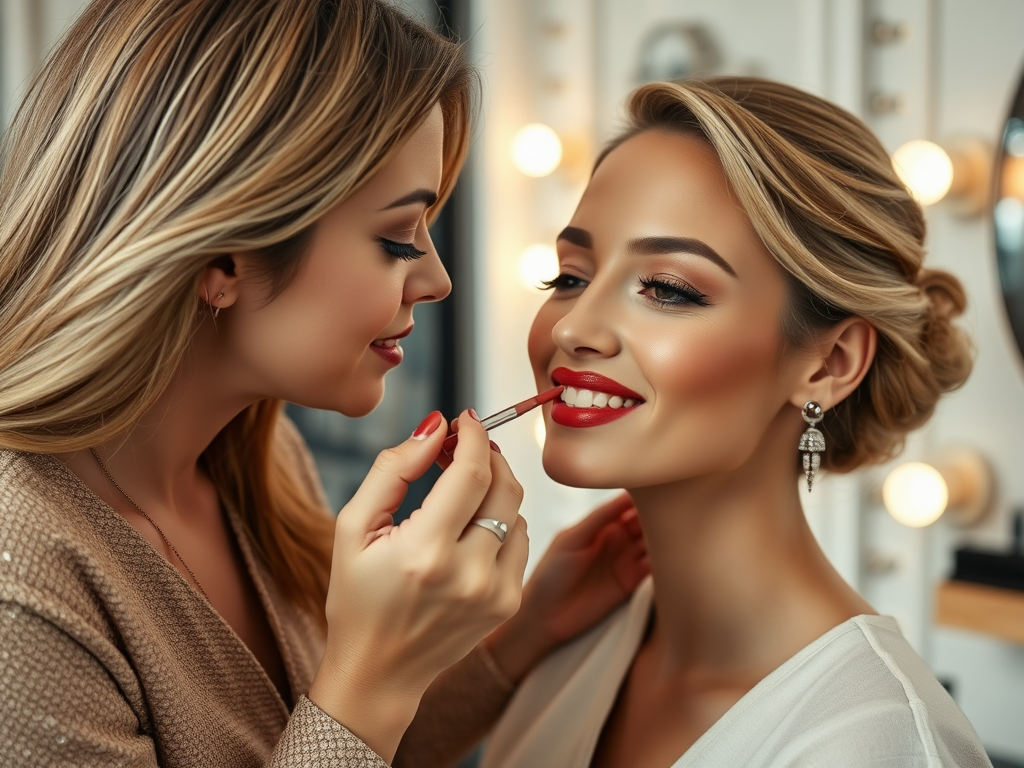
To achieve a flawless makeup look, proper skin preparation is vital. Think of your skin as a canvas; the cleaner and smoother it is, the better your makeup will apply. Remember that skin can vary greatly between individuals; therefore, it’s crucial to understand your skin type in order to choose the right products. Start by cleansing your face thoroughly. After that, it’s essential to apply a moisturizer tailored to your skin type, be it oily, dry, or combination. In addition, using a primer will help your makeup adhere better and last longer throughout the day. Here is a quick overview of the necessary steps to prepare your skin effectively.
| Step | Action |
|---|---|
| 1 | Cleansing: Remove any dirt or makeup from the day. |
| 2 | Moisturizing: Hydrate the skin based on its type. |
| 3 | Priming: Apply primer to smooth out your skin. |
Step-by-Step Makeup Application Process
Now that your skin is prepped and ready, it’s time to dive into the makeup application process. Each step plays a specific role in ensuring that your makeup looks balanced and enhances your features. Let’s break it down step-by-step so you can confidently apply your makeup, whether it’s for everyday wear or a special occasion.
Applying Foundation
Start by selecting the right shade of foundation that matches your skin tone. Testing a bit on your jawline is a great way to determine the perfect match. Once you have your foundation, you’ll want to choose between using a brush or a sponge for application; each tool offers different finishes. Applying foundation in thin layers can help achieve a more natural look. Blend well, especially around the jawline and hairline, ensuring there are no obvious lines.
Concealing Flaws
After that, it’s time to conceal any imperfections or blemishes. A quality concealer can work wonders, particularly under the eyes and on visible blemishes. Using a patting motion with your fingertip or a concealer brush can enhance coverage without disturbing your foundation. Be cautious to blend it well to avoid a cakey appearance. Always remember that less is more; you can build up if necessary!
Adding Color to the Cheeks
Next up is blush, which adds a beautiful, healthy glow to your complexion. It’s essential to choose a shade that complements your overall look and skin tone, whether it’s a soft pink or a bold coral. A simple brush stroke on the apples of your cheeks can dramatically brighten your appearance. Remember to blend it well to avoid harsh lines; a little softening can make all the difference!
Defining the Eyes
Your eyes can truly be the focal point of your makeup look. Start by applying eyeshadow, using neutral tones for a natural look or brighter colors for something more adventurous. Following eyeshadow, eyeliner can help define your eyes shape and make them stand out. Don’t forget to curl your lashes and apply mascara to finish off the eye look for volume and drama. A well-groomed eyebrow is the finishing touch, framing your face perfectly.
Finally, top off your look with a suitable lipstick. When choosing a shade, consider the overall theme of your makeup. A lip liner can help define the shape and prevent feathering. Whether you prefer a glossy finish or a matte look, applying a well-chosen lipstick takes your makeup to the next level. Carefully layer and blend for an impeccable finish.
Common Makeup Mistakes to Avoid
Even the most seasoned makeup gurus encounter pitfalls from time to time. But as a beginner, being aware of these common mistakes can help you avoid them and keep your makeup game strong. Here are some issues to be mindful of:
- Choosing the wrong foundation shade.
- Overdoing the concealer, making it too heavy.
- Applying too much blush, leading to an unnatural look.
- Neglecting to blend eyeshadow properly.
- Not using a setting spray, resulting in makeup fading quickly.
Conclusion
Learning how to apply makeup can feel daunting at first, but with practice and patience, it becomes an enriching skill. By following these steps and paying attention to the common pitfalls along the way, you can build a makeup routine that enhances your features and expresses your style. Remember that everyone is unique, and makeup should merely amplify your natural beauty. Enjoy experimenting, and let your creativity shine as you continue to explore the colorful world of makeup!
Frequently Asked Questions
- What’s the best makeup for beginners? Start with a basic kit that includes foundation, concealer, blush, and mascara.
- Do I need expensive makeup to look good? No, there are many budget-friendly options that work effectively.
- How can I make my makeup last longer? Use a setting spray or powder, and consider the type of primer suited for your skin.
- What is the best way to clean my makeup brushes? Use mild soap or brush cleaner and rinse thoroughly, allowing them to dry flat.
- Can I apply makeup without primer? Yes, but primer helps create a smoother surface and prolongs wear.
